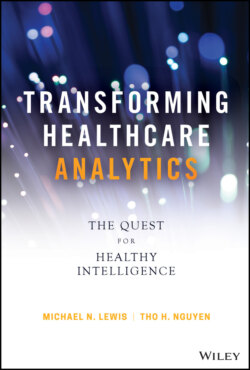Читать книгу Transforming Healthcare Analytics - Michael N. Lewis - Страница 24
STRICT REGULATIONS
ОглавлениеEach time you and I visit a clinician, there are many forms to sign prior to seeing the clinician. One of them is the HIPAA (Health Insurance Portability and Accountability Act) form. This act was developed in 1996 to protect the patient's privacy as much as possible. Under HIPAA, the Department of Health and Human Services (HHS) establishes boundaries on the use and releases of our personal health records. HIPAA also outlines precautions to protect our information and establishes civil and criminal penalties for any violations. The law applies not just to hospitals and medical practices but also to chiropractors, dentists, nursing homes, pharmacies, and psychologists, as well as to business associates such as third-party administrators, pharmacy, benefit managers for health plans, billing and transcription companies, and professionals performing legal, accounting, or administrative work. Misuse of sensitive information about the patient can lead to serious liabilities.
For each clinician, we must sign this form to allow healthcare providers, hospitals, and small practices to collect, store, access, and manage patient data to be HIPAA-compliant. Once the form is signed, your medical records and history are made available for healthcare professionals to access, analyze, and diagnose. HIPAA addresses the use and disclosure of our Protected Health Information (PHI). PHI refers to any information that can be used to identify a patient, including telephone or fax numbers, websites or photos, names of relatives, any number or code that may lead to identifying a patient's identity, and much more. As we transition to the digital world, HIPAA compliance will be enforced to access our personal health records and share what is needed to get quality healthcare.
Healthcare organizations across the country are faced with several data challenges. Managing a tremendous amount of data that includes medical and patient along with an increased demand for on-time access to medical records is an opportunity for improvement. In addition, healthcare organizations want to streamline their application portfolios to protect our health data in a secured environment that is accessible for compliance, reporting, and sharing. Now that we have discussed the data in detail, let's examine the value of analytics and the analytic applications that healthcare organizations use.
